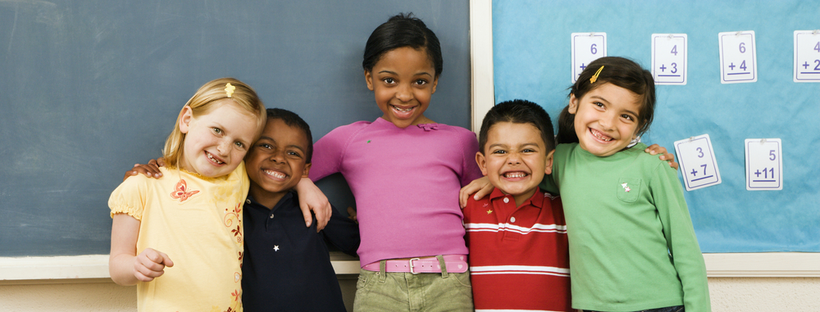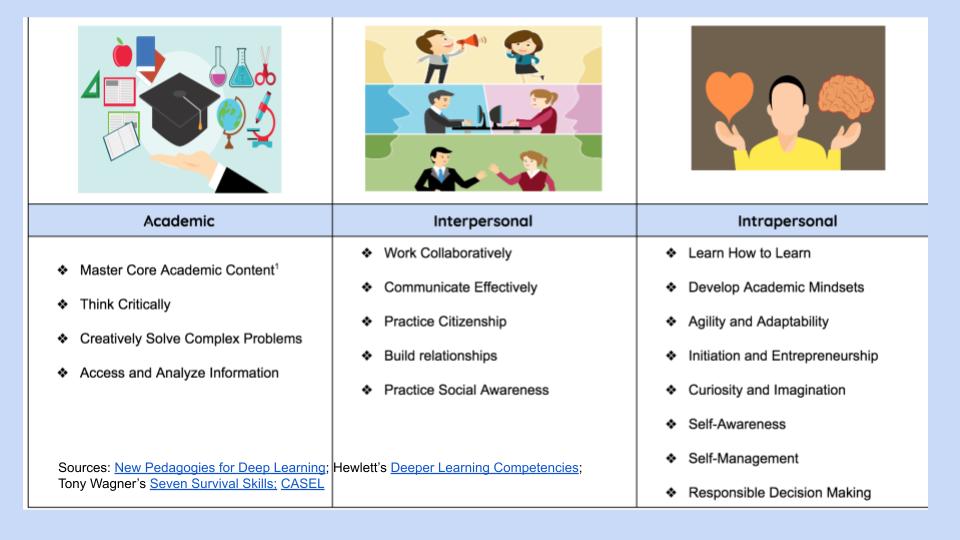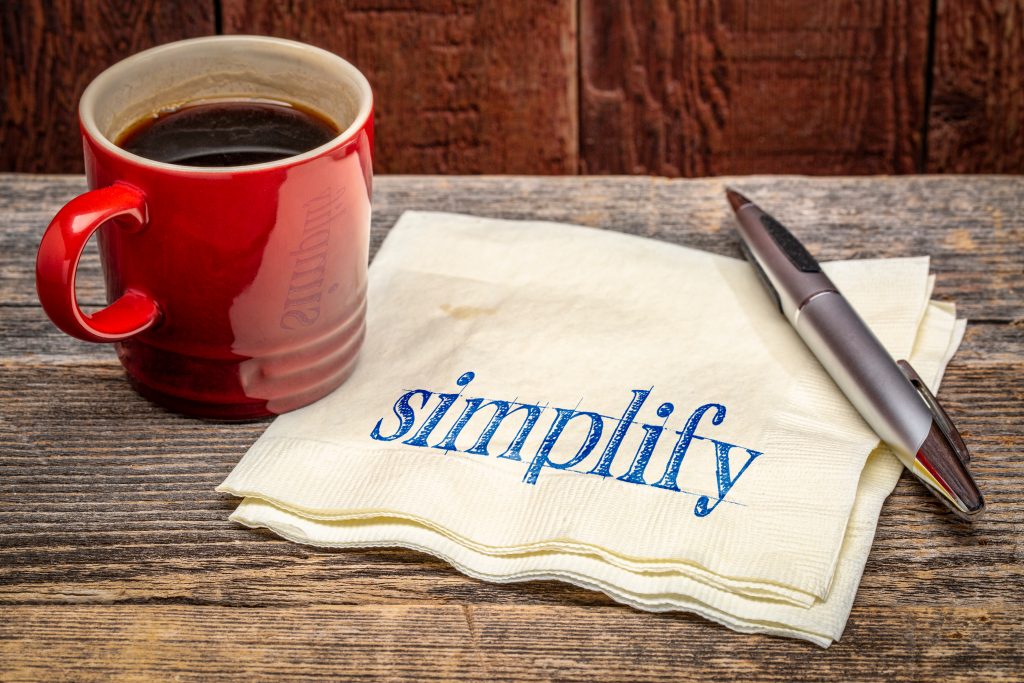
The recent focus on students’ social-emotional development is well-placed. While this was a hot topic before the pandemic, the need for SEL support has been magnified over the past two years. In response, we’ve seen districts adopt SEL programs and approaches intended to help students manage their emotions, regulate their own behavior, and develop healthy relationships. In fact, according to the Collaborative for Academic, Social, and Emotional Learning (CASEL), “more than 20 states have adopted K-12 SEL competencies and all 50 have adopted pre-K SEL competencies”.
That is wonderful. It is. But it’s not enough. If we are truly serious about academic AND social-emotional learning, we must shift to mastery learning.
In addition to explicit SEL instruction, successful SEL implementation calls for a supportive school and classroom climate and integration of SEL into academic instruction. But our traditional systems, particularly our grading and ranking systems, are the opposite of supportive. Indeed, 75% of U.S. high school students expressed boredom, anger, sadness, fear, or stress while in school and they list finals, midterms and the pressure to get good grades as top stressors.
How is it possible, then, that we can say we support SEL when we haven’t made serious changes to the way we teach and grade students? What message do we send to students when we tell them that learning needs to happen on the same schedule for all students? How can we claim to provide a supportive learning environment when we allow students to fail?
Mastery learning is a relatively simple concept. Students are supported and expected to demonstrate mastery of essential knowledge and skills. In a mastery learning system, we recognize that students require different approaches to learning, varying amounts of time to learn, and regular feedback and practice. Essentially, mastery learning is making sure that all kids learn what we say they need to learn.
Seems both simple and logical, right? It is. But simple isn’t the same as easy, and we have spent years in what Dan Lortie called “an apprenticeship of observation” in which those of us entering educator training grew up understanding the status quo as the norm, thereby replicating it without much questioning. The same seems to be true for many who continue into leadership.
As difficult as change may be, mastery learning has always been the right approach if we indeed care about student learning. Now, though, our collective focus on student well-being should force us to take a deeper look at how mastery learning allows us to truly supports SEL (and vice versa):
First, An essential component of mastery learning is an aligned curriculum that clarifies exactly what students must know and be able to do, often framed as essential standards. From there, we articulate what proficiency looks like and provide regular feedback to students so they come to understand how they are progressing. In doing so, we build students’ self-awareness skills.
Second, mastery learning requires feedback from formative assessments, followed by relearning, and reassessment. Students know that getting a B or squeezing by with a passing grade is not the name of the game. They learn self-management and responsible decision-making when they determine (or help determine) how and when they will relearn and redo.
Most importantly, a mastery learning approach is the manifestation of a belief that ALL students can learn deeply. If we truly believe this, and do all that we can to make it a reality, we will create places of deep and joyful learning in which all students feel engaged, smart, successful, supported, and worthy of love and respect.
Read More

I believe that ALL students can and should learn deeply and joyfully every single day. (I also believe that everyone should find great joy–daily–in their work, but that’s for another post.)
So, what is Deep and Joyful learning, anyway? Sometimes when I wonder whether or not I should use the phrase. In particular, I worry that the “joyful” part sounds fluffy–that it sounds like I care more about superficial happiness than I do about rigorous learning. But nothing could be farther from the truth.
I liken deep and joyful learning to the way you feel after a really great run or a spin class or game of soccer. You know, how you give it everything you have, you dig deep, and you end both exhausted and elated.
It’s like that.
You see this in classrooms regularly. Students are buzzing with enthusiasm as they solve problems, make new meaning or transfer their learning in one area to another. I ask you, is this happening for all students every day in your school? If we’re truthful with ourselves, probably not.
Even setting that expectation probably feels overwhelming. After all, teachers have so many standards to cover and their jobs are so complex, that to ask them to make sure each student is joyfully learning seems like a huge ask. And sure, as with any goal, we set ALL or 100% of students as an aspiration–knowing that the higher we set our targets and expectations, the better chance we have at getting better results.
OK, but HOW do we do this. From what I’ve observed, it’s all about regularly and repeatedly using a few high leverage strategies that allow students to develop multiple competencies simultaneously.
In synthesizing the work of Michael Fullan, Monica Martinez and the Hewlett Foundation, CASEL, and Tony Wagner, three distinct competency areas emerge:
- Academic–skills like critical thinking and complex problem-solving built around standards
- Interpersonal –skills like collaboration and communication
- Intrapersonal–skills like self-awareness and self–management and the ability to set and achieve goals and learn from mistakes.

In subsequent posts, I’ll go deeper into the importance of each area and share some strategies for developing them in and alongside our learners.
Read More
Teachers are overwhelmed. Parents are overwhelmed. Leaders are overwhelmed.
And, to be fair, this feeling isn’t new for educators, though it’s magnified now.
It’s time to simplify.
Simple does not mean easy. Simple does not mean that we are letting up on learning.
Instead, when we simplify, we arrive at what’s really essential.
When I’ve worked with curriculum teams, we usually start with the work of DuFour, et. al.
Here are their “big questions” to guide teaching and learning.
- What do we want all students to know and be able to do?
- How will we know if they’ve learned it?
- How will we support students when they struggle?
- How will we enrich the learning for students who are already proficient?
Educators always love these questions.
Great, I say. So, now, let’s answer that first question.
Teachers pull out their state standards, textbooks, final exams, etc and soon our response to question 1 fills up pages.
It becomes clear that we cannot teach everything if we want students to learn deeply and joyfully.
We need to strip down to the essential standards.
Teachers understandably have trouble with this. EVERYTHING feels essential.
But then I ask them to picture a capable student in their class. Now, consider that this student will endure some tough circumstances this year–perhaps illness–that causes him/her to be out for a significant portion of the year.
Most teachers can’t conceive of having this student repeat an entire year or course. So they then consider what the student would REALLY need to know and be able to do in order to move beyond this class or course.
We use this guidance from Larry Ainsworth to choose our essential standards (aka Power or Priority Standards.)
Essential standards are those that exhibit:
- Endurance–skills and knowledge needed for life outside this course
- Leverage–skills and knowledge from this course that help us learn and understand standards in other courses
- Readiness–skills and knowledge that we must have to advance to the next year/course
In fact, there are schools and teachers that do this regularly for students with special circumstances.
We just never considered that we would need to do this for all students…in all subjects.
But we can. Simplify. Get down to the essentials–the real and true essentials and go from there.
Right now, I would ask teachers to consider the ONE thing students must know or be able to do between now and next year. How can we teach that? How will we (and students) know if they’ve learned it?
Then, go on to prioritize the NEXT thing on the list and so on. If the first is all we can reasonably achieve this year, so be it.
Kudos to those districts that have made this focus on essential standards crystal clear, reducing overwhelm and giving space for deep and joyful learning.
#ourFCPS friends- Essential Standards for remaining instructional weeks for ES & MS are posted to Distance Learning Support (teacher-facing) BB site. For ES, also posted to ECF google site at https://t.co/LauP8aXIwm (FCPS google log-in required). @kmkoelsch @christiepday pic.twitter.com/uP74XXrrLp
— Andrea Hand (@AndreaHand2) April 12, 2020
Read More
A model of personalized learning?
I recently visited a school district that had recently implemented blended learning. Specifically, teachers were using the station rotation model of blended learning. It was a clear and welcome departure from the teacher at front, student in rows model that had been an instructional staple.
As the superintendent welcomed us, he said, that blended learning allows us to assess and intervene in real time, which he considered key to personalization.
Hmmm. I’m not so sure.
Let me be clear, I’m a big fan of using technology to personalize learning. I applaud and push all schools—K-12—to get to a 1:1 learning environment so that all students can easily and quickly use technology for a variety of things.
And, I think that the station-rotation model of instruction represents a huge and welcome instructional shift. Done well, it allows for rich collaborative time with peers, independent time to work and struggle productively, and time in small groups with a teacher who is using all forms of data to hone in on individual students’ learning.
But that doesn’t mean it’s personalized.
For learning to be personalized, students must own their learning. They must have a clear sense of the what, why and the how.
The What: Standards and Competencies
If learning is to be personalized, we adults must clearly articulate what mastery looks like in a given course. We must have determined power standards, unpacked those standards and created proficiency scales so that we, students and parents have clear indicators of what it takes to get to mastery.
Even our youngest students can and should understand what is expected of them, what they will be learning and what it will look like for them when they’ve “got it”.
The Why: What Will I Do With This?
Courses of study and units within them must be tied to Essential Questions. Those EQs put the learning into a larger context and transferability. Additionally, connections can and should be made to real-world applications. We adults must also understand that the goal is deeper learning.
The How: How Will I be able to demonstrate mastery?
Ownership, voice and choice. Station-rotation can be heavily teacher-directed. No doubt, students are often more on-task in small groups than in the traditional teacher at the front model, but they still may not get to those higher levels of engagement in which they direct the learning. Providing more opportunities for students to direct their learning and to truly engage with the learning, via long-term projects, for example would allow student to truly personalize.
Blended learning is a must for us in 21st century classrooms. Teachers can use a number of resources and platforms to allow students to dig deeper into content and skills, to take real-time assessments and get directed feedback, and to collaborate with peers in and out of the classroom using online tools. It’s a necessary first step to deep, joyful and personalized learning.
But it’s not the end.
Read More“Um, Ms. Smith, is there some extra credit I can do to bring my grade up?”
Such an annoying question, right? And yet, many teachers succumb. They find or create something the student can do to earn a few extra points. Especially when those points are the difference between and F and a D.
No teacher wants her students to fail.
But how did we get here in the first place?
There is no reason for students to earn Fs—or even Ds in a class. I mean , really, why do kids ever fail a class?
Is it truly because they are not capable?
If that’s the case, then there’s a system problem — a need for interventions, guidance,etc.
But, for the most part, any student sitting in your classroom is capable of earning a passing grade and of mastering what is deemed ESSENTIAL for the course.
They may not all excel, but they can and should all pass… And extra credit need not play any role.
Here are 3 steps to take to eliminate Fs—with no extra credit!
1) MAKE 50 the lowest possible grade.
If you haven’t already, do not give scores lower than 50. Or, if you prefer, use a 0-50 point scale.
That simply keeps the grading scale aligned.
The zero-100 scale is flawed:
A= 90-100 (10 point range)
B=80-89 (9 point range)
C= 70-79 (9 point range_
D= 60-69 (9 point range)
F= 0-59 (59 point range)
(See Monte Syrie’s discussion of the harmfulness of this scale here.)
Of course, if you want to keep the 0-100, that’s fine, but only if you insist on multiple retakes until the student reaches the desired level of proficiency. (See #3 Below)
2) Replace or weigh grades over time.
Have you heard the one about the parachute operator? Let’s say you’re going skydiving and you have your choice of two instructors to jump with you. They both received a B in parachute opening. Instructor Jamie did really well at the beginning of class, folding the parachute correctly and doing well on quizzes about the parachute. As time went by, his grades dropped when it became clear that he couldn’t open the parachute quickly. Instructor Jody did really poorly on those early folding and multiple choice quizzes, but toward the end of the course could demonstrate her proficiency in opening the darn thing. Both averaged a B. Which one do you choose?
In my work, we’ve used a Decaying Average so that the later grades carry more weight. There are other options, including a Power Law or Replacing Grades. Erin Werra describes all three better than I can in this post.
3) Allow retakes.
Better yet, insist on retakes below a certain score. You can apply this to everyone so that anyone with X score has to retake it. You can also allow students to individually determine their lowest acceptable grade—with your blessing and, perhaps, with a parent notification form.
This is a shift and there will be grumbling from students (who might prefer to just ask for that dreaded extra credit later.)
Here’s a script:
In this class, it’s not okay to fail. We are working on very important skills and concepts. I wouldn’t be doing my job if any of you failed.
However, you all come to this class with different levels of skill, enthusiasm, etc. So, while it would be great if everyone got an A, that might not be reasonable —or even in your best interests if you need to conserve time and effort for some other classes.
Therefore, I want everyone to share with me your highest desired grade, the lowest you can deal with and your expectation ( a best case scenario, a worst-case scenario and a realistic expectation).
I’d also like you to share why you have this grade goal. Might be something like:
- This subject comes easily to me. I think this class should be an “easy A” for me and will help boost my GPA
- This subject has always been a struggle for me. I know I can do the work with effort and I’d be okay with a C range grade.
- I like this subject and can do the work, but I have to give more effort to some other, tougher classes. So while I think I could get an A, I’ll be satisfied in the B range.
As your teacher, I simply cannot accept Ds and Fs. Luckily for you, we have a retake policy in this class. Anyone who scores below our Desired Level of Proficiency on a major assessment will have the opportunity to earn the DLP by retaking or redoing some or all of the assessment (or an alternate assessment). I have some guidelines about when, where and how that will happen.
EXTRA CREDIT Is just that..
It’s extra…beyond…unnecessary.
Don’t do it! Don’t have them do some throwaway extra something that neither of you cares about. Instead, have them prove that they can do what’s necessary.
Listen, extra credit is additional time, work and energy for you and for your students. So are retakes. Which one makes more sense?
Read MoreAll kids should love school.
Yes, they should.
But we all know that they don’t. In fact, many hate it.
By high school, many students have become disenagaged. And we’re losing some really bright minds along the way.
Jake’s* story:
My friend Kelly and I have talked many times over the years about her son, Jake. For years now, Kelly has been frustrated—wondering how to support this boy she loves so much. Parent teacher conferences focus on what a great kid Jake is—how articulate he is, how full of enthusiasm about the stuff he loves. However…there’s the issue of not completing homework. And losing papers. And indecipherable handwriting. And occasional distractedness.
So, Kelly asked me. What should we do? Should we get him a tutor? A peer mentor who will help him create better homework habits?
Here’s how I see Jake. This is a kid who, at age 8, devised a trap for Santa. Wanting to get a glimpse of the elusive fat man, Jake created an elaborate trap with trip wires and bells. (It would have worked, too, if someone hadn’t tipped off Mr. Claus at the last moment.)
This is a kid who spends hours, days, months focused on projects that often involve digging up the yard and rigging contraptions. He contemplates problems and devises solutions. He’s curious and visionary. He tries, fails, learns and tries again.
And his grades are pretty lousy.
Does that add up?
So, what I told Kelly is this. If it’s a choice between better grades and his enthusiasm, joy, curiosity and creativity….well, the choice is clear, isn’t it?
This shouldn’t be a choice.
So, what can be done?
1) Ditch traditional HOMEWORK.
That doesn’t mean that kids don’t need to practice or that they don’t need to do work or thinking beyond the school day. Often, they do. But not always. Experiment with ways to balance practice, skill development and responsibility. Middle school math teacher Michelle Russell ended up doing this. What will you do differently?
2) Create choice boards for EVERYTHING…
…including the above-mentioned homework. While some may think they are better suited for elementary school, the truth is they work at all levels. I’ve worked with HS teachers to create summer reading choice boards (that included options for watching videos, listening to podcasts or audiobooks as well as space for student-created options). I’ve also used choice boards when creating professional development opportunities for teachers!
Kasey Bell shared some choice board ideas on her site, Shake Up Learning.
3) Have students reflect and self-assess ALL THE TIME.
Here’s my Smiley Face Self-Assessment. Don’t be fooled by the name—this isn’t just for young learners. A colleague adapted this for use with his AP Physics classes—with great success.
4) Show parents your syllabus/course overview.
Ask for feedback about projects, assignments, their child’s response. (I included a more detailed, teacher-facing overview template in my last post.)
5) Remember your WHY.
Why do you do this work? Why do you teach? What do you want your legacy to be?
Here are some hints:
YOU are preparing students for a future you cannot fully imagine or appreciate. Therefore, YOU need to create the conditions where they will learn how to learn. YOU have complete control over whether students are cognitively engaged, thinking hard and working with enthusiasm.
For more thoughts about this, see the awesome Catlin Tucker’s post about Articulating your Why
All kids can love school. All kids can learn deeply and joyfully every day. So can you
*Names have been changed
Read More
